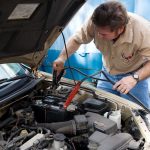When it comes to fluorescent light sockets you have two basic kinds of wiring to consider. Some are shunted and others are not and there is a very good reason for this. Here is a closer look at shunted sockets and the un-shunted ones, to help you understand their purpose and avoid problems when you perform maintenance.
It’s All About the Ballasts
As you know, ballasts are used to regulate and deliver current to the bulbs, and there are two main types of ballasts being used today (with some variations). Some are magnetic while others are electronic. Let’s talk first about the magnetic start ballast.
Magnetic Start
Magnetic ballasts have been around for some time, and they are usually referred to as “rapid start”. With the rapid start ballast, voltage reaches the cathode and heats it. This offers excellent bulb life and cycle life, but it is not the most energy efficient method for fluorescent lighting. These ballasts are usually wired in a series configuration, and when you wire lights in series (like with Christmas tree lights) once one burns out, you lose all light on the circuit (unit).
Instant Start
Instant start ballasts are electronic, whereas, the rapid start types are magnetic. Many places are changing over to instant start because they are more energy efficient. In addition, electronic instant start systems are wired in parallel (like residential wiring systems). This way, if a bulb burns out, only the burned out bulb is lost in the circuit. Because you have two types of circuits (series and parallel) you need two types of sockets.
Shunted Sockets
Standard magnetic ballasts have wires traveling from one end to the other. However, in order to utilize the parallel wiring of the electronic ballasts, one must shunt the circuit. A shunted socket is essentially the same thing as running a shunt wire from one connection (side) to another, creating a parallel circuit.
How to Tell Shunted from Un-shunted
If you are not sure whether you have shunted sockets or not, remove one bulb and all lights on the unit should go out. You also can check the socket with an ohm meter or continuity checker. If you have resistance or continuity between each side of the socket, it is shunted.
Getting the Best Shunted Sockets for Your Money
When you need the right fluorescent sockets, choose a company with decades of experience in the business. To get the lowest prices, choose a provider which is also the manufacturer, to eliminate middleman costs. Also, look for a provider who backs up their products with a good warranty.
H. H. Fluorescent Parts offers high quality fluorescent lighting parts (like shunted sockets) at affordable prices. To check out our large variety of selections, visit our home on the Web at Hhfluorescentparts.net now.









